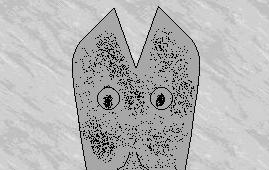The problem with anything that needs to be interpreted is that it can be misinterpreted. Nietzsche said that. Or, possibly Charlie Brown. Somebody with intellectual heft, in any case.
This is especially true of satirical writing. It takes effort for a reader of a piece of writing that appears to be about aliens invading Earth to understand that it is really about how increasingly regressive taxation policies lead to widening income inequality. Or, to use a different example, how a piece of writing about regressive taxation policies and widening income equality could actually be about Kim Kardashian’s three month marriage to Kris Humphries. Or, that Kim Kardashian’s disastrous marriage to Kris Humphries could really be about an alien invasion of Earth. Satire is complicated that way.
To fully appreciate satire, you have to be able to read between the lines. Not literally, of course: there’s nothing but white space between the lines on a page, so there is nothing to read there. Metaphorically. And, an inability to appreciate metaphors brings us back to the theme of this article.
Let’s be charitable and say that most people who do not understand satire are simply morons. Let’s say that because there are people who intentionally misread satire, insisting that a piece of writing is just about Kim Kardashian’s marriage when the subtext is clearly about an alien invasion of Earth. Those who intentionally misread satire usually have a personal interest in avoiding the actual point of such writing (aliens, in the current example, would want to focus on Kim Kardashian – possibly the only ones who would). And, those people are often very loud in their denunciations of satirical writing.
As a defense mechanism, some outlets for satire have starting labeling satirical articles so that readers know what they are getting into before they start (and greatly indemnifying the publication from criticism after they finish). At its most basic, such labeling looks like this:
A Modest Proposal
by Jonathan Swift
Some publications find the one word label too limited, too easily missed by easily offended readers. These publications often start with a paragraph warning potential readers about the true nature of what they are about to be exposed to. An example of such a paragraph would be:
WARNING: The following piece of writing is satire. SA-TI-RE. It is not meant to be taken literally. Please, do not send us angry letters about how inhumane it would be to sell the children of poor Irish immigrants to wealthy Brits for food. Although that is what this article appears to be about, that is not actually what the article is about. You just have to read between the lines (not the lines of the text, obviously, because there is only white spa…
You get the idea. When the disclaimer is longer than the article it disclaims, you know that the publisher has been stung by criticism in the past.
In any case, just as people have stopped reading the warning labels on cigarette packages, readers increasingly ignore the warning message at the start of pieces of writing. For this reason, some publishers have gone so far as to insert notice of satire directly into satirical essays. This sometimes looks like this:

Some publishers find this too subtle, though, and go for a more attention-grabbing look:

(Readers need to be careful about such labels, however. There are people who say things that they know will be offensive to people, then claim that they are satirists in order to explain to their supporters that the outrage that they are trying to generate is actually unjustified. Here is but one example:

This could, perhaps, be a satirical comment on Kim Kardashian’s marital proclivities, but that would be a stretch.)
Even if the pages of a work are lined with arrows down either side of text, indicating satire (which they rarely are, since this would add substantially to the number of pages the work takes up, which would increase the cost of publishing it), the reader used to the speed of digital communications may quickly learn to ignore them, leaving such readers open to once again misinterpreting a text. The latest effort by publishers to combat this problem is to embed warnings of satire directly into the works themselves. This looks very much like this:
That the [SATIRE] remaining hundred thousand may, at a year old, be offered in sale [VERY MUCH SATIRE] to the persons of quality and fortune [SATIRE] through the kingdom[SATIRE]; always advising the mother to let them suck plentifully [SATIRE] in the last month so as to render them plump [SATIRE] and fat [SATIRE] for a good table [OH SO VERY UNMISTAKABLY SATIRE].
If this has a surreal, Dadaistic feel to it, well, that doesn’t necessarily clash with a work’s satirical intent.
Publishers could, one supposes, ignore people who do not know how to read satire – or have partisan reasons for misreading it – and let works of satire stand or fall on their own merits. Of course, this would take a certain amount of courage on the part of publishers.
So, Dadaism it is.


